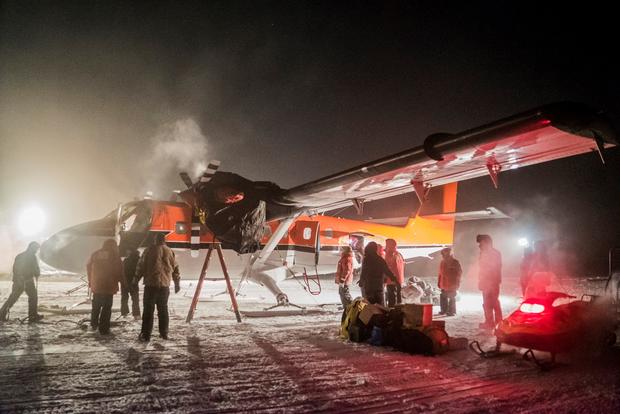Rare and risky South Pole medical rescue hits crucial point
An emergency medical flight from the South Pole is underway. The mission took off overnight from the Amundsen-Scott Station, an American research facility, heading to a British outpost on the edge of Antarctica. At least one person aboard needs urgent medical care.
There have only been three medical evacuations from the station since 1999, reports CBS News' Dana Jacobson. Temperatures are often too cold for routine flights to and from the South Pole, which is why this rescue mission is so rare and dangerous.
Winter officially arrived on Antarctica this week, plunging the South Pole into perpetual darkness. The temperature reached minus 76 degrees Fahrenheit Tuesday.
This year 48 people planned to spend the winter at the Amundsen-Scott South Pole Station, including a doctor and physician's assistant, but with at least one person requiring outside treatment, rescue mission was deemed necessary.
A similar mission was needed in 2003 when scientist Barry McCue was airlifted so he could get emergency gallbladder surgery.
"They came up to me and said, 'You could die any day now,'" McCue recalled.
Another evacuation plane in 2001 flew through billowing winds and temperatures so cold they can freeze jet fuel and hydraulics -- conditions most aircraft just can't handle.
Sean Louttit was a pilot on both rescues.
"You don't really know what to expect until you open the door and you hit it face on," he said.
The current mission actually started last Tuesday, when two twin otter planes took off from Canada.
Both aircraft finally reached Antarctica Monday, but only one was sent Tuesday morning to make perhaps the most dangerous leg of the trip: the near 10-hour flight to the South Pole.
The rescue crew -- a pilot, co-pilot, engineer and medic -- arrived at the station around 5:20 p.m. ET. After a roughly 10-hour layover to give them rest, the evacuation began.
"I wasn't afraid. I mean, look at the dragon in the eye. ... And so I just let them do their job, and it all worked out for the best!" McCue said.
The plane is expected to arrive on the northern tip of Antarctica Wednesday afternoon after the roughly 1,500-mile flight. Once it lands, at least one sick worker will be flown off the continent for medical treatment.
